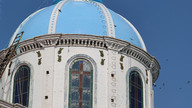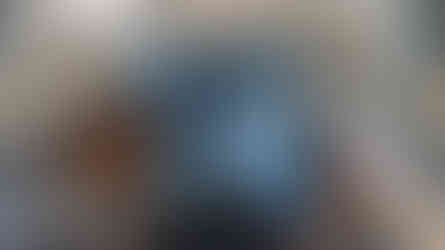Restoration Malacatos Church: An attempt to organize Observations
- Jasmina
- Jun 22, 2024
- 2 min read
Updated: Feb 20
In August of last year, I noticed restoration work beginning on the domes (^1_German: Kuppel) and facades of the church of Malacatos (^2_Spanish: Iglesia de Malacatos: Santuario Diocesano del Señor de la Caridad). Initially, the cleaning of all five domes—three at the rear covering the altar and two at the church's entrance—each tiled with light blue and white ceramic, was observable. The cleaning process, utilizing an acidic solution (*1_might specify when information is available), effectively restored the domes' brightness.
The entrance towers, housing various clocks and church bells, consist of octagonal prisms with clocks (*2_four per tower) and are topped with round domes. Below these are smaller cylindrical prisms with four round-arch openings, each culminating in a small dome adorned with a white cross. During the dome restoration, the smaller cylindrical towers were painted. Subsequently, attention turned to the three larger domes covering the altar and transept (^3_German: Querschiff), initially cleaned and polished. The main tower above the altar was then replastered and painted.
Following this, the northeast facade underwent replastering and repainting, mostly completed by mid-January of this year. The focus then shifted to the clock towers, where similar work was performed on the northeast tower only. Strangely, this effort was interrupted shortly before Easter (^4_Spanish: Pascua, or more commonly Semana Santa, a significant Catholic celebration in Ecuador), in early March, prompting a transition from exterior to interior work.
Internally, restoration efforts concentrated on the main dome above the altar, involving replastering and repainting its concave interior. In my view, a significant error occurred here. Instead of engaging an artist specializing in illusionistic texture painting, conventional construction workers added stars and clouds that resemble a child's naive painting—not suitable for a church altar, especially considering the church's prominence in Malacatos and its historical significance, constructed in its current form between 1942 and 1951 (Díaz Mora, 2011, p. 18).
Work then proceeded indoors, focusing on painting the domes over the transept and the modular cassettes of the ceiling. I observed that some tasks were undertaken by members of the church community, a commendable approach to cost-saving. However, work on the colonnade and repainting of the columns leading to the altar remains outstanding due to the complexity of mimicking marble textures. Here, I suggested to the parish priest the involvement of visual arts specialists and art students.
Currently, exterior work continues with the repainting of the community center southwest of the building. I anticipate that the most challenging part—restoring the two 13-meter-high clock towers and the main facade with its intricate neoclassical details—will be saved for last.
Additionally, I wish to mention Leonela Rosario Díaz Mora's 2011 bachelor thesis titled "Identificación y puesta en valor de la Iglesia de Malacatos para revalorizar su patrimonio cultural" (^5_English: Identification and enhancement of the Church of Malacatos to revalue its cultural heritage), conducted at Universidad Nacional de Loja. I believe this thesis should have been considered by the parish committee overseeing the restoration.
__________________________
(Díaz Mora, L. R. (2011). Identificación y puesta en valor de la Iglesia de Malacatos para revalorizar su patrimonio cultural [Bachelor Thesis]. Universidad Nacional del Loja. https://dspace.unl.edu.ec/jspui/handle/123456789/962).















































































Comments